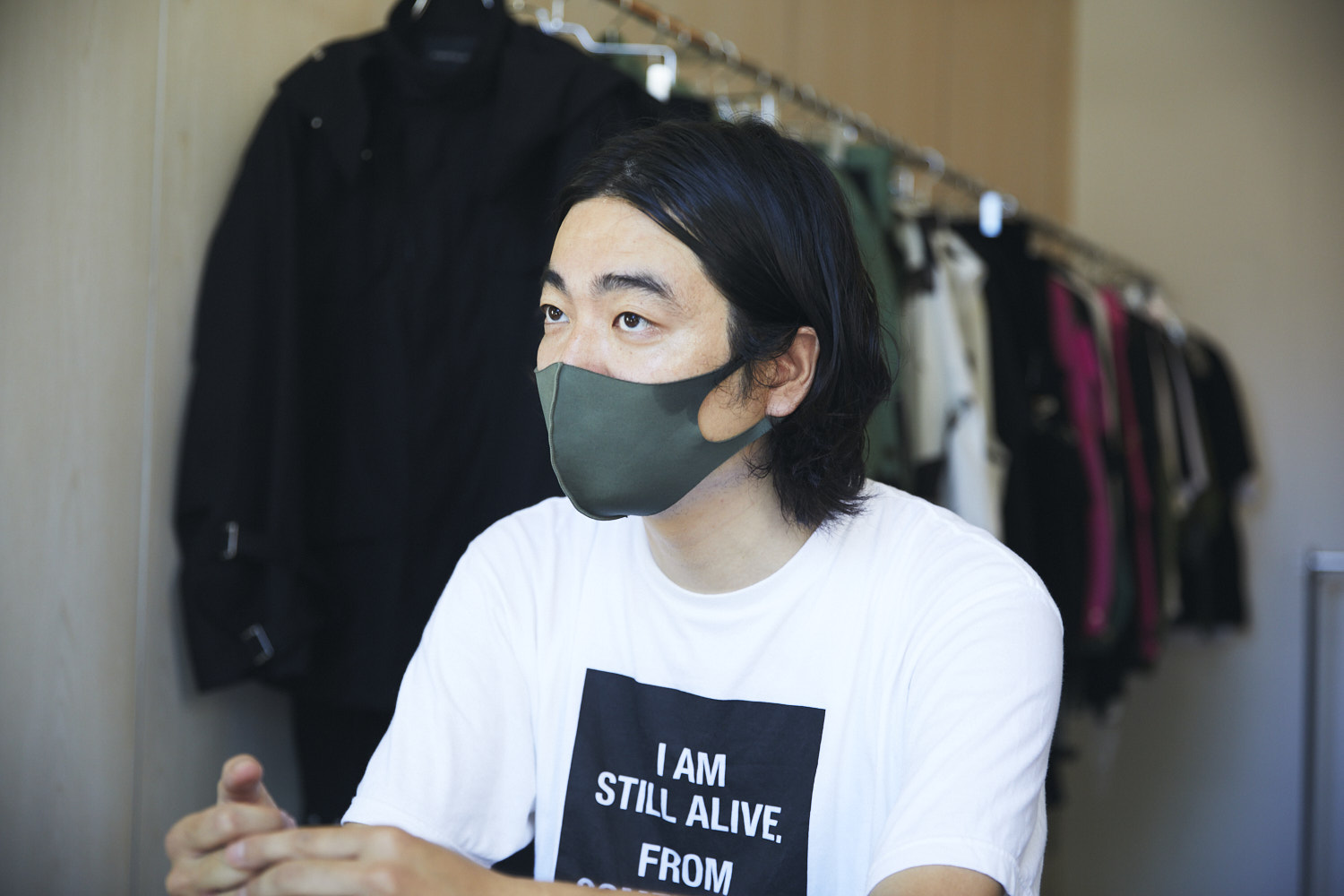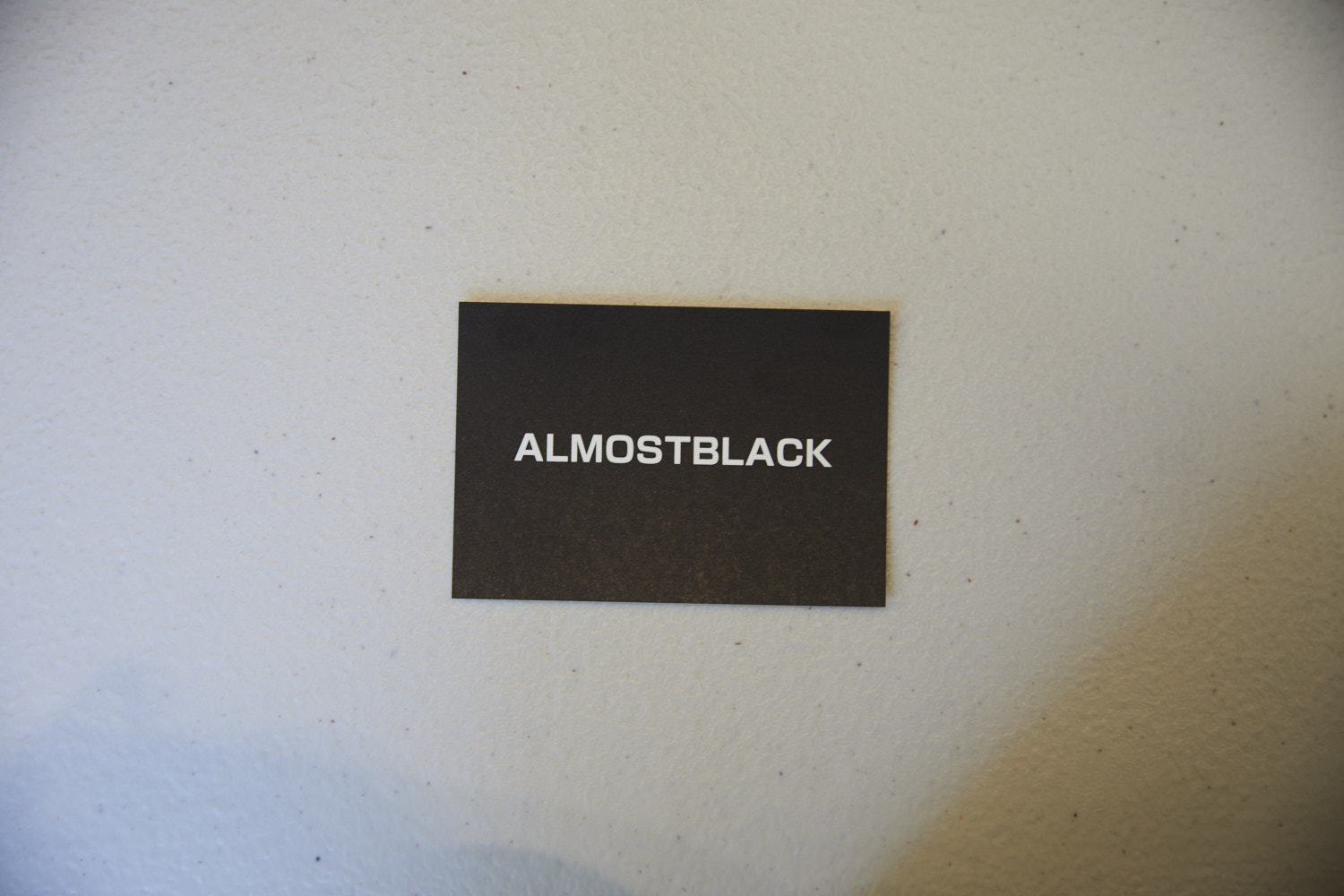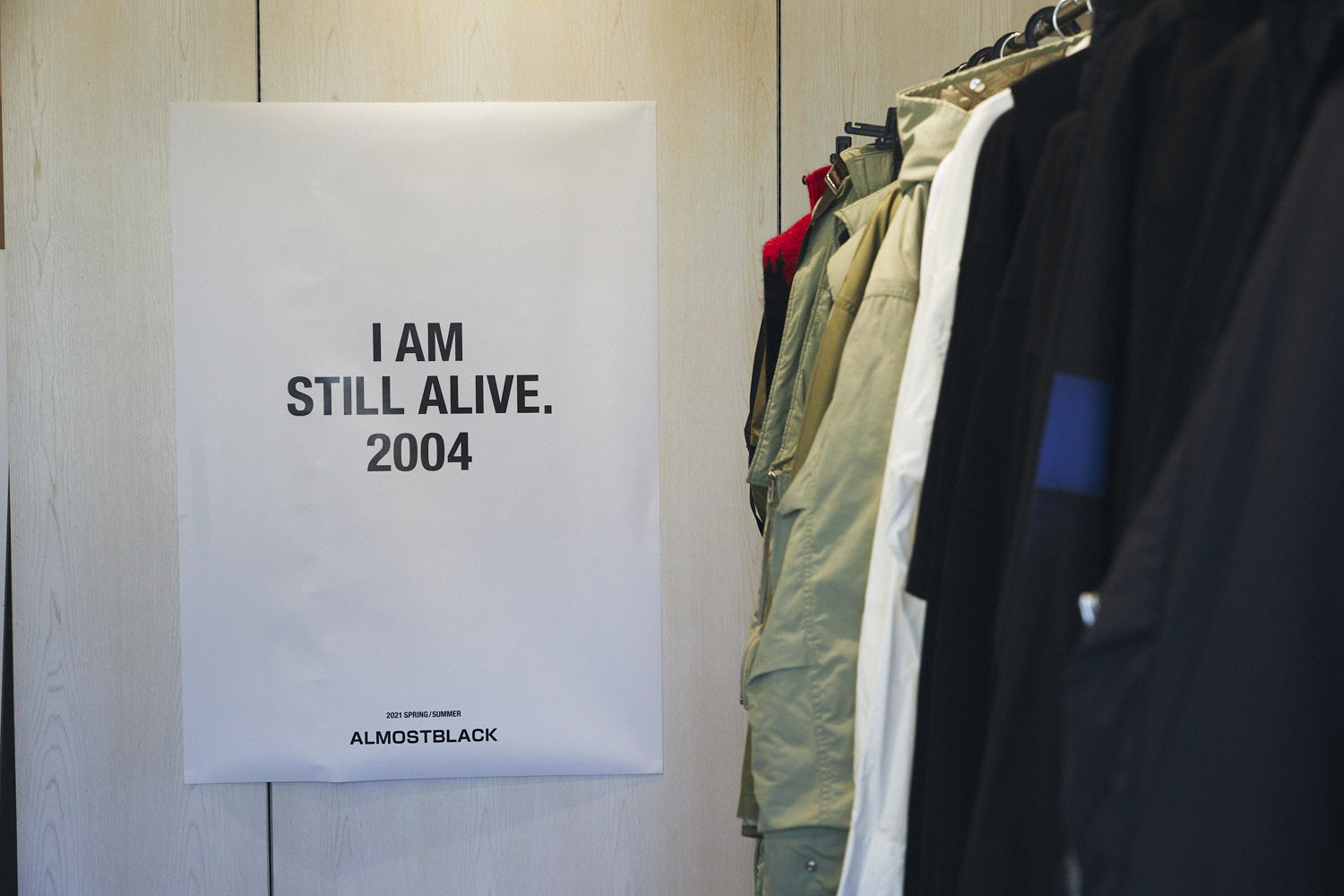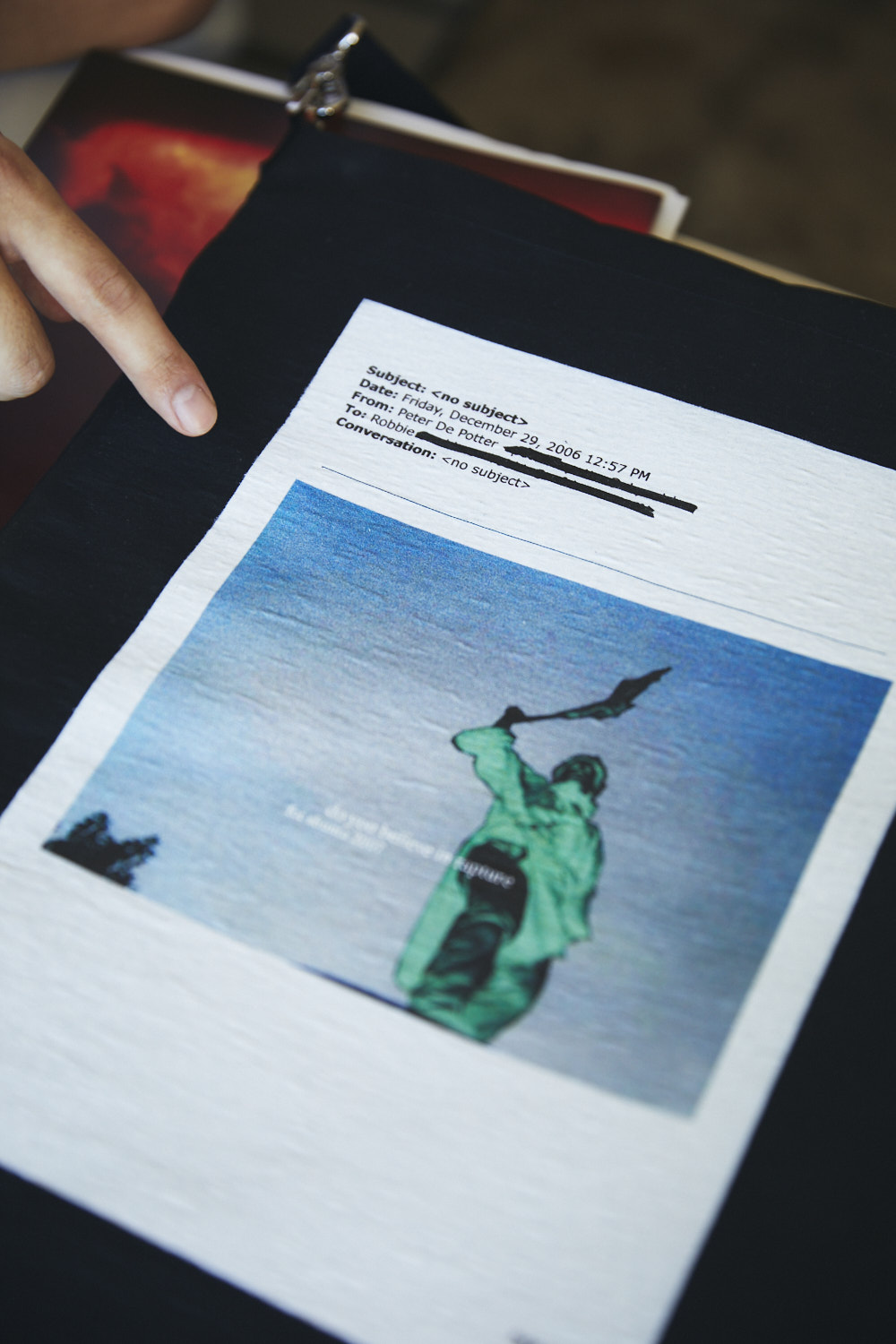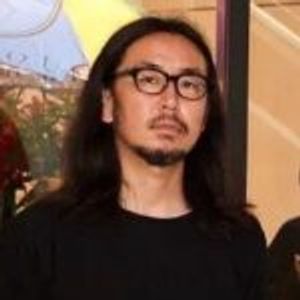The concept of “Almost Black” is “Post Japanism.” Since his debut at the end of 2015-16, his consistently presented a collection combines “Japanese aesthetics” such as art, historical significance and thought, with art and music from cultures around the world. After graduating from Esmod Paris, designer Shunta Nakajima worked as a design assistant at Raf Simons’s Atelier in Antwerp, Belgium for two years from 2005 to 2007. In 2005, he was appointed creative director of “Jill Sander” men’s and women’s wear in June. The release of “Raf by Raf Simons,” a diffusion line distancing himself from rebellious energy and subculture, which was being led by Punk, marked a period of change for himself. Then, what did Nakajima learn about the mode at Raf’s studio, and what scenery did he see from the stage he longed to learn from? What breath from Raf appears in “Almost Black?”
ーーWhat led you to “Almostblack” as a post Japanism concept?
Shunta Nakajima: Before we launched Almost Black, I and Kawase (“Product Almost Black” designer) had a plan to incorporate something quintessentially Japanese. When I was abroad, I felt that foreigners love their country and take pride in their culture. Japan may be featured as an element of the design, but it is ultimately a story in western interpretation. Although they feel something is missing, the Japanese tend to face away from their national character. While there are many excellent arts and traditional crafts in Japan, I wanted to express the new Japanese style of the present day through myself, including a historical background.
ーーWho inspired you to put art as the theme of your collection?
Nakajima: In the first collection, we combined the works of Kosei Matsui, a potter and living national treasure, with Post Punk and New Wave. However, this wasn’t the main influence as various people were involved, so it is difficult to name any one person. But if I were pressed to mention someone, it would be Raf Simons. There were a lot of art and photographs in Atelier, and I saw the process reflected in the collection. There is a similar scene in Dior and I, but the image board has all kinds of art, and I was surprised how I fell into it.
ーーHow did Raf Simons knowledge of art influence you?
Nakajima: I was influenced by music, clothes, attitudes towards art, and image board photographs. However, I was afraid that Raf would become everything if I stayed here more than two years of studio life.
ーーOriginality had such an impact that it would have eroded you.
Nakajima: That’s right. I had my own brand in mind, and I wanted to pursue a Japanese style even though the theme was unclear.
Photo: Name card *brown
ーーThe deep navy color of “Almost Black” is rooted in the Japanese culture of dyeing.
Nakajima: “Kachi-iro(deep navy)” has traditionally been a lucky color from the Warring States period to the present day. In the Meiji era, it was adopted in military uniforms and was called Gunkachi-iro (martial victory color). Both the Samurai Japan baseball team and the Japan National Football Team have adopted indigo in their uniforms. While having a historical background, the color is rooted in the life of the Japanese, so it felt natural having indigo as a theme of the brand. In addition, the name of the brand is made in the silver ratio. We often hear the golden ratio in the Western way of thinking. It is said to be the ratio of traditional Western beauty, whereas traditional Japanese beauty is the silver ratio and is also used in shrines and temples.
ーーExpressing the theme in specific detail, I think the immediacy and conceptual expression is the strength of Almost Black.
Nakajima: With post-Japanism in mind, we interpret art individually and think about bringing it into clothes. The artist’s character is prioritized in doing so is.
ーーIt seems difficult to balance.
Nakajima: It’s quite difficult, but I feel it’s extremely important to include mutual fusion and repulsion, in a good way. Yet, we are always conscious of society. How do we scale our business while pursuing fashion, art, and originality? I’m also on the Hollywood design team, so I’m aware of current trend from MD.
ーーDid you look back on your roots, identity, and experiences as you expanded overseas this year?
Nakajima: No, I never thought about it. Something we did differently was having an exhibition with sales. Thankfully, we had more than 30-40 sales. Also, foreigners explicitly state their opinions. In that sense it was a good experience due to the feedback we receive regarding the pricing and quality.
ーーHow did you get to work as a design assistant in Raf Simons’ studio?
Nakajima: I had a vague idea of wanting to move to Antwerp and work, and I always liked Raf Simmons, so I called the Atelier directly. I got an interview the next day, and Pieter Mulier took an interest to my lookbook. I was asked to submit a drawing for the next interview, so I sketched nearly 50 collection looks that I personally love. Raf himself liked it, and as a result, he decided to let me work in Atelier.
ーーYou could convey the feeling and enthusiasm of your love.
Nakajima: I still remember my first day of work. I was waiting for the elevator and when the door opened, there was Raf, himself. I had longed for this moment, but nerves got the better of me and I stammered a greeting, but he hugged me and said, “Thank you for coming.” He values a familial setting, perhaps because there were few staff. My heart is caught in that moment.
I was an intern for two years in a renewed system and during that time, there was a rush of applicants, and I was genuinely happy to make myself useful without being a new hire. Raf moved from his 3rd floor home in Atelier after becoming creative director of Jil Sander, and he let me move in because I didn’t have any money. Living in that surreal room with the bed taking up a large area is another good memory.
ーーWhat about Raf Simons influenced you the most?
Nakajima: I decided to pursue a fashion career by looking at a collection themed on “Consume” in spring and summer 2003. While sticking to the feeling and idea of the 1990’s street mode, which was futuristic at the time, it seemed to lack focus. However, the pioneering attitude is outstanding! With an increasing number of designers following suit, they were looking at things ahead of the times. Being in Atelier at the time was a valuable experience.
ーーCan you tell us how “Almost Black” led to this season’s collaboration with Peter de Potter?
Nakajima: Peter, who worked with us in 2006, sent me a greeting e-mail using a main graphic that was inspired by On Kawara’s “Today Series.” He wanted to express his emotions at that time, so he suggested having the address and date as is. Importantly, he didn’t own the photograph. Incidentally, I didn’t have an e-mail address at the time, so the greeting e-mail was addressed to Robbie Snelders. It was an important e-mail, so I printed it out and hung it in the room. The collaboration isn’t just about borrowing artwork, it’s because of the memories and stories I’ve built from being in Antwerp.
ーーWhat do you think about fashion post corona?
Nakajima: Peter, who worked with us in 2006, sent me a greeting e-mail using a main graphic that was inspired by On Kawara’s “Today Series.” He wanted to express his emotions at that time, so he suggested having the address and date as is. Importantly, he didn’t own the photograph. Incidentally, I didn’t have an e-mail address at the time, so the greeting e-mail was addressed to Robbie Snelders. It was an important e-mail, so I printed it out and hung it in the room. The collaboration isn’t just about borrowing artwork, it’s because of the memories and stories I’ve built from being in Antwerp.
ーーWhat do you think about fashion post corona?
Nakajima: Conveying the music, space, and dynamism of clothes on the runway are difficult to convey in a video. It remains to be seen whether we can hold shows in the same way as before, but I hope it will turn around. When working on a short video in collaboration with Ambro, I feel the possibilities will suddenly increase if digital ideas can be fully utilized.
In addition, when thinking about scaling-up and sustaining our company, as well as selling clothes, we also fulfil functions such as being a creative agency. We actively engage in ideas and possibilities derived from clothing. This attitude is seen in the United Arrows & Suns project. At the launch, there were some negative views about the brand’s involvement, but I hope such opinions will gradually change.
Shunta Nakajima
Born in Aichi Prefecture in 1982. After graduating from Esmod Paris, he moved to Antwerp and worked as a design assistant for Raf Simmons. He is currently working on “Almost Black,” and is a member of the “N. Hollywood” design team.During spring and summer 2020, he has been involved with the original project, “United Arrows & Suns.”
Photography Nobuko Baba(SIGNO)

